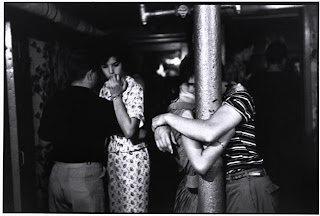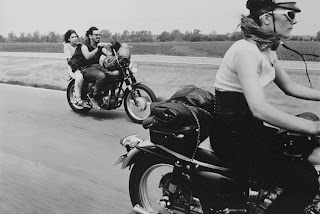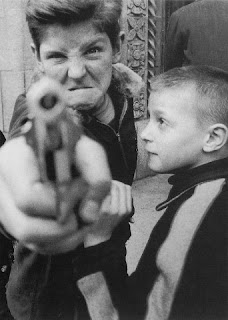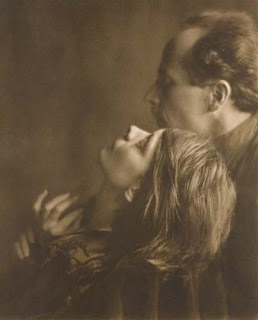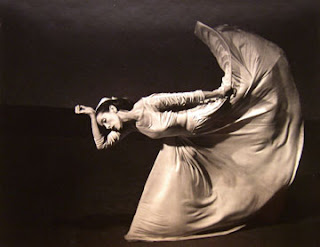I can't actually remember when and where I first came across Alex and his work. More than likely it was via his Flickr site where I saw his Sonnets series and I was impressed by what I saw. Very quickly, you sense Alex is friendly, helpful, knowledgable and passionate about art. He is an interesting guy, clearly talented, successful and doing a great job of getting his art seen. He his currently mastering the more fiddly and tactile aspect of photography - wet plate collodion. I wanted to get to know him and his art better.
I did some homework and I could quickly see that he had been interviewed in the past and had explained and answered many of the questions I would have started with here. So, readers, once you have read the interview with Alex, go back and check out these other links.
JDD: Wet Plate Collodion – why the fascination and interest?
AB: I had been familiar with ambrotypes, glass plate negatives and tintypes for many years through my work in museums, but had never thought it possible to actually produce this kind of work myself, although I was aware of contemporary artists like Sally Mann who had been working extensively in this process in the US.
It wasn't until I was asked to exhibit with the Scottish Photographers group alongside Carl Radford that I became aware that someone in Scotland was actively creating their own wet plate images. A few months later I had a chance meeting in Glencoe in the Highlands at the foot of Buachaille Etive Beag with Carl, and it led to us talking in more depth about wet plate, and he convinced me (without having to use too much persuasion) to become one of his students. During that weekend workshop I became convinced that this approach to photography was one which I wanted to pursue further - I had never become more emotionally invested in the creation of images before. Other than Daguerreotypes, I had never seen images which looked so visually arresting - wet plate portraits and landscapes have a tangible almost three dimensional quality to them.
Why do you want to make the process of photography more challenging?
I think that question is relative to the individual. As I've evolved as a photographer I've found that my methodology has taken on a slower, more considered approach. Instead of taking 300 images in one day, perhaps I'll make 3 or 4. I went from the sheer adrenaline of shooting gig photographs, to landscape photography, to very slow landscapes with long exposures, to collodion. It may change, but at the moment I'm largely uninterested in the quick fix of the digital image - I want the involvement that this process brings. For me making images any other way would be more challenging.
Why make photography less instant?
Wet plate collodion much like any other process is one which comes with strict limitations. It isn't just the cumbersome equipment itself which presents the biggest obstacle, or the chemicals, or the technical knowledge required to create images, but the whole reason of why I'm making an image in the first place. Collodion has really forced me to sit down and re-evaluate what I'm doing as an artist. Every image is therefore the end result of a rigorous cross examination process. I learned a lot from photographer and explorer Thomas Joshua Coopers approach to photography - he would travel to the most extreme edges of our planet with only a handful of glass plates, and this would force him to focus his mind on what he was trying to achieve. The downside however is that I'm not as prolific as I could otherwise be, but I'm happy to work at my own pace.
What are you hoping for from the results?
Introspection and inspiration. I don't know if I will be working with wet plate in 10 years time, but for now it makes sense. Maybe when I look back on this period I will understand more about myself and my choices. That would be enlightening, as now I have no idea!
Are you not just being trendy? Is it a fad?
The wet plate community has grown immeasurably in the last few years, which is no doubt why it may be perceived as being 'trendy' - due to the increased exposure it is receiving. This expansion has been in part due to the more widespread teaching of the process in Europe by people such as Quinn Jacobson, Kerik Kouklis or Carl Radford. It's also easier to get your hands on the chemicals required, but crucially it's access to the knowledge required to make your own images. For many years Collodion based photography was the preserve of a small group of wealthy middle class Americans, however in the last ten years all of that has changed as people have begun to share the secrets of their craft, and the price of workshops has dropped. At present I can't say if it's a fad or not, but I suspect not. It's very early in the rebirth of the medium and people for the most part are still finding their feet. As a result there are only a few established artists who are pushing the format forward in any meaningful way, but those who are will leave a long legacy.
I think wet plate collodion works best with portraits. You’re known for your landscapes. Can we expect to see more portraits from you in the future?
I've never really worked much in portraiture in the past so I don't really see why that would change now just because I'm using a different process. I would however agree with you that wet plate is ideally matched to portraiture due to its immediacy, and a survey of the modern community reveals that the majority are producing works of this type. When I was taught by Carl I too produced many portraits, however this was more to do with the workshop environment. To date I've largely eschewed portraiture altogether in favour of a return to landscape. That being said I have spent the last few months working on a project called Lux et Veritas which is based in portraiture - hopefully I can complete it in the coming year.
Does your recent wet plate work have any commercial potential?
It all depends on the viewer and the market I suppose, but it isn't something I'm particularly concerned with at present. My current project Low Lands is not as commercial as Sonnets, and it remains to be seen if the public or collectors will respond well to my new collodion work. My perception at present is that museum curators down to ordinary members of the public just can't get beyond the process itself to view wet plate collodion images objectively on their own merits. It's my hope that perhaps in a decade or so they will be able to view these images in a more considered way.
Do you wish you had been born in another time in the past? If so, when?
It's probably quite obvious, but I'd love to have interacted with the luminaries of the Fin de siècle such as Wilde and Whistler, or have witnessed Weimar society first hand, I'd like to have lived through the first wave of photographers who struck out from the UK to photograph the world, such as John Thomson or Alexander Gardner.
What part, if any, does your family background, your nationality and upbringing play in how your images turn out?
Growing up in Scotland I was acutely aware that my accent (which I'm still quizzed about on a near daily basis) and general worldview marked me out as slightly different. When I first moved to the UK I lived in several different places in the first few years, and found it hard to adapt to my surroundings when I finally did settle in Irvine on the Ayrshire coast. I generally rejected life on the west coast of Scotland and clung onto my German roots, becoming quiet and insular in the process. As a result of this I became fairly obsessed with ideas of self and identity, and my place in the world, and that has fed into anything that I've done subsequently. The Sonnets project is probably the most obvious example of this. I'm using a very clear motif from German art (the rückenfigur) to explore ideas of identity in some of the most well known landscapes in Scotland.
You appear to me to be someone with a clear and confident individual style and taste, not only in photography, but in music, film and literature as well. How did that go down with your contemporaries, at school say for example? Did you meet like-minded people at school/university?
When I was younger I tended to be more introverted, and spent much of my free time reading anything I could get my hands on. Whilst at school I was aided by a rather brilliant librarian called Alison Sinclair who managed to acquire anything I wanted to read . From Goethe to Gogol I managed to develop my own interests in literature, and was aided by a supportive English Teacher called Anne McGowan who first introduced me to poet Edwin Morgan, and a Mr Fleming who introduced me to Kurt Vonnegut. These influences coupled with my time in the Art Department learning about the great American landscape photographers really did give me the foundation from which to begin to create my own work. In respects to my contemporaries I think there was a lot of indifference to anything other than the here and now, but that was to be expected given life in a little town on the West Coast of Scotland. University of course was much different - it was good to meet people who had similar interests, but even better to find people who challenged my views and preconceptions.
How important is it for photographers to be with other creative people?
I think it's important that there is a constant exchange of ideas between creative people, and for photographers to create work which reaches out beyond the usual role that photography fulfills. Most of my own projects have come from being inspired by literature, film and from visual artists - I don't really want to repeat the work of other photographers.
You have exhibited in some high profile places; you have collaborated with some high profile people. How do you achieve that? What can other photographers start doing to market and promote themselves as successfully as you have done?
Once I left home I lived pretty much hand to mouth for many years. Some of the places I lived in leaked badly, and some had walls which had gone black due to damp and mold. I was constantly ill. I wouldn't have money for anything other than the most basic food. Living in those kind of conditions can really push you hard to want to succeed, and as much of a cliche as it is to be a 'poor starving artist' it did give me the motivation to get out there and make images. I was lucky to have the support of my wife, my dad and my friends, who amongst them helped me to get out to locations, model, and even move and hang entire exhibitions. As for high profile names, I made a list of people I wanted to work with and wrote to many of them. Sometimes it worked out*, and sometimes nothing happened. I had nothing to lose. The important thing was having the ambition to get out there and believe in what I was doing. Nothing much has changed in that respect.
What are your thoughts on the future of photography?
There will be an ever increasing demand for so called 'alternative' processes as photographers try desperately to mark themselves out as artists in the face of what they perceive as the soulless nature of digital. This misguided view, which I'm seeing becoming ever more prevalent, is producing a wave of increasingly dull imagery which hides behind the processes themselves. Beyond that I don't know - photography as a medium is generally losing its importance, but will always have the potential to communicate something vital to the viewer. That will keep it relevant I feel.
What would be the best thing anyone could say about one of your photographs?
I think the best reaction for any artwork is to inspire others to create their own. Praise passes quickly and in the end doesn't really stay with me - I just wish I could say the same about negativity, but I'm just happy that people are engaging with what I do.
Is there a photograph you wished you had taken?
There are many, but the one which immediately comes to mind is an image by Harry Benson of Willy Brandt taken in 1961 when he was Mayor of West Berlin, a city in the heart of crisis.
Its a deeply resonant image, and in it I see a man with the weight of the world on his shoulders. There is a similar feeling in his image of exiled Russian author Aleksandr Solzhenitsyn. Benson really was the master of capturing such moments.
What question should I have asked you and what would your answer be?
Talisker Bay on Skye. That's where it all made sense.
I would like thank Alex for the time he took to answer these questions and for the quality of his answers. I hope you enjoyed this interview as much as I did. Feel free to comment and share.























